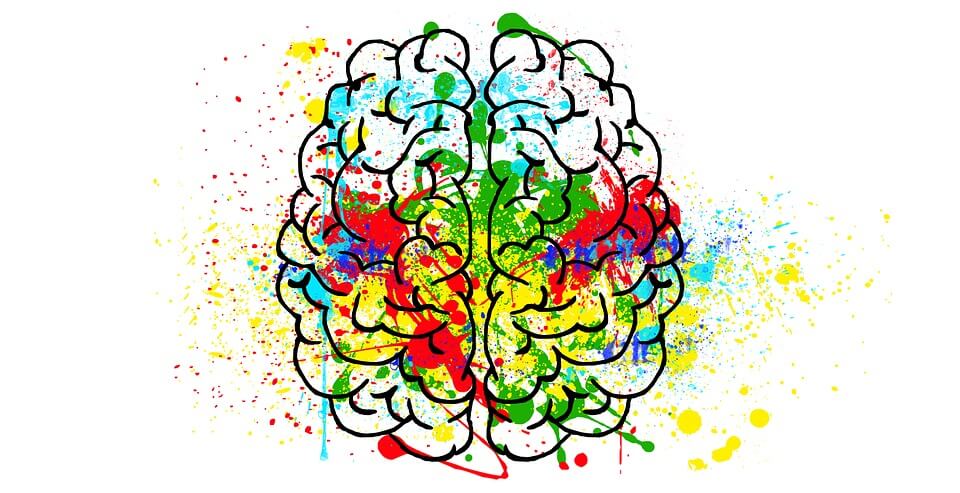Anandamide - The Creativity Secret Weapon
Posted by TEAM PURE NOOTROPICS

For most nootropics enthusiasts and brain hacking lovers, there are few neuro chemicals that aren't familiar. We may not always know every detail about dopamine or norepinephrine, but we have heard the name before. Anandamide is far less well known, but is arguably the most important missing component of the creativity puzzle.
Creativity is one of the most elusive skills despite its importance in the modern era. As machines start completing any and all repetitive tasks, creativity and ingenuity becomes all-important. Anandamide is one of the brain chemicals that allows us to achieve that.
Ecstasis and Anandamide
Anandamide is a fatty acid neurotransmitter derived from specific omega-6 polyunsaturated fatty acid. Most diets probably have enough of these fats to acquire plenty of anandamide, but that doesn't mean it is always used effectively.
Information and research around anandamide is scarce, but first entered the mainstream with flow researcher Steven Kotler. In his recent interview with Joe Rogan, Kotler describes how to get into a flow state and he mentions anandamide prominently.
According to Kotler's interview, and the follow-up book Stealing Fire, anandamide helps increase lateral thinking. This skill allows our brain to hold a higher volume of information (think working memory) in order to have more connections and thus ideas. This is the definition of creativity in a functional sense.
With a variety of ideas in the brain, it's possible to connect two disparate concepts and create something unique. Almost every knowledge worker or student could benefit from the ability to hold these ideas together.
Along with chemicals like dopamine, norepinephrine, serotonin, and oxytocin, the anandamide molecule is integral for flow states that produce creativity and a cascade of new ideas. Unlike most writers, Kotler (and his partner Jamie Wheal) isn't creating fact from fiction. Evidence is scarce, but does point towards increased cognition and creative states.
Benefits of Anandamide
Beyond creativity, anandamide has a host of well-studied benefits. Many of these require more evidence and are theoretical, but there are plenty of animal models showing the efficacy of this important neurotransmitter.
Working Memory - This is one of the key components of creativity. As mentioned above, anandamide helps gather many pieces of information in order to create new ideas. There are few studies on healthy adults, but one model showed that rats afflicted with working memory deficits improved this cognitive measure with only anandamide.
From this evidence, it is clear anandamide interacts with working memory and various mechanisms. The change is scientifically proven, but for healthy adults the magnitude is still unknown.
Neurogenesis - According to Dr. Gary Wenk, anandamide can be a powerful chemical associated with neurogenesis especially in the elderly. As a researcher of neuroscience, he has insights into the effects of anandamide and the interactions with the brain.
Until recently, scientists believed that neurogenesis (the growing of new brain cells) only happened in youth and adolescents. Today it is well known that neurogenesis continues long into adulthood and the better we can manage it, the less risk we have of neurodegenerative problems like memory issues and dementia.
Anti-Depressive - Beyond the cognitive benefits, there are several mood and quality of life enhancements with anandamide as well. Studies of rat brain models suggest anandamide has effective mood boosting properties in the brain, which can help those with a poor mood.
Naturally, reducing depressive feelings is positive for quality of life, but it can also be important for cognition as well. It's nearly impossible to maintain a high cognitive output when in a poor mental state. In contrast, an uplifted and positive mood can yield higher mental performance.
Hacking Anandamide
Anandamide is an important brain chemical associated with a host of benefits, most notably improved creativity and processing. The problem with anandamide, is that this endogenous chemical (created within our brain) can't really be replicated with a supplement. There aren't any anandamide supplements on the market (yet) and even if there were, the benefits would be non-existent.
Chocolate - Scientists don't really know what component of chocolate causes anandamide increases, but it is thought to be the most reliable source of this chemical. Some speculation suggests the reason we crave chocolate is for the anandamide, which is a mood-boosting and pain reducing compound. For those avoiding sugar, cocoa powder works just fine. The cocoa powder is filled with al 300+ chemical compounds, one of which increases anandamide.
Truffles - If you can afford to eat truffles often, a new study suggests truffles create the precursors to anandamide so we can make them ourselves. Because the fungus creates enough of this precursor, we don't need to eat (and spend) much.

